Featured image courtesy Camille Vidal.
A movement started across the pond is reshaping the relationship people have with alcohol, and starting new conversations about the topic.
When Laura Willoughby sought to change her relationship with alcohol, she found that there weren’t many options to turn to in the United Kingdom that suited her well. So she created her own. What started out as a Facebook group grew into what is now a movement that swept across the UK and eventually parts of the globe. Club Soda, the mindful drinking community Willoughby co-founded, was just the start of a conversation about how people can drink mindfully.
Camille Vidal, founder of La Maison Wellness, describes what a mindful drinker is best. For her, there are many different types of mindful drinkers, but there is not just one label. “Often, because the movement is expanding and there are more and more people becoming vocal about their sobriety, about cutting alcohol out of their life, very often people assume that if you are a mindful drinker, it means that you’re sober,” Vidal says. “But actually, mindful drinking, and being a mindful drinker, is being mindful, being aware, being conscious of how much, how often and what you drink.
For Willoughby, she identifies as being alcohol-free, and has been for eight and a half years. Club Soda was born from Willoughby’s realization that seeking a change in a relationship with alcohol was met with the disease model of addiction, which may help some people, but not all. “Alcohol is an identity, not a medical condition,” Willoughby says. “I’m alcohol-free because that suits me best and alcohol doesn’t have anything left for me; I definitely took everything that was possible from alcohol.”
Eventually the mindful drinking conversation began to shift to the beverage industry. According to Vidal, today there are about 90 different alcohol-free spirits available around the world, but one company was the catalyst for this category. “Five years ago there was one brand that launched the world’s first alcohol-free spirit — that’s called Seedlip.
Seedlip is a botanical spirit,” Vidal says. “And they really paved the way for rethinking how we drink.” Seedlip’s roots were planted in London in 2015 by the brand’s founder, Ben Branson. Starting with one spirit, the company grew to include three choices, each with an individual flavor profile. One interesting spirit Vidal notes is its Garden 108 spirit that is made with traditional herbs and its signature, peas, giving it a refreshing, gin-like flavor.
Vidal uses Seedlip and other brands — another one she recommends is a company called Lyres that is based in Australia — to create her mindful cocktails that she features on her company’s website. When the pandemic lockdown began in London, where she currently resides, she started “happy hours” on her social media where she showed people how to make her cocktails. Vidal also collaborates with companies and people, such as Willoughby, to spread the awareness of drinking mindfully.
Another category of alcohol-free spirits that has taken to the market are alternatives that are inspired to bring a new way of drinking and a new overall experience, explains Vidal. Three Spirit, another brand Vidal enjoys, specializes in spirits — they call elixirs — that are powered by plants. The elixirs not only taste good, but make the drinker feel good. “They’ve all been built to recreate the experience you have when you drink alcohol and the very reason why people drink alcohol,” explains Vidal. “For example, they have one that is called the Night Cap that helps you to relax, to ease stress, to calm you down, to help you with sleep — because it contains valerian, which helps with sleeping.”
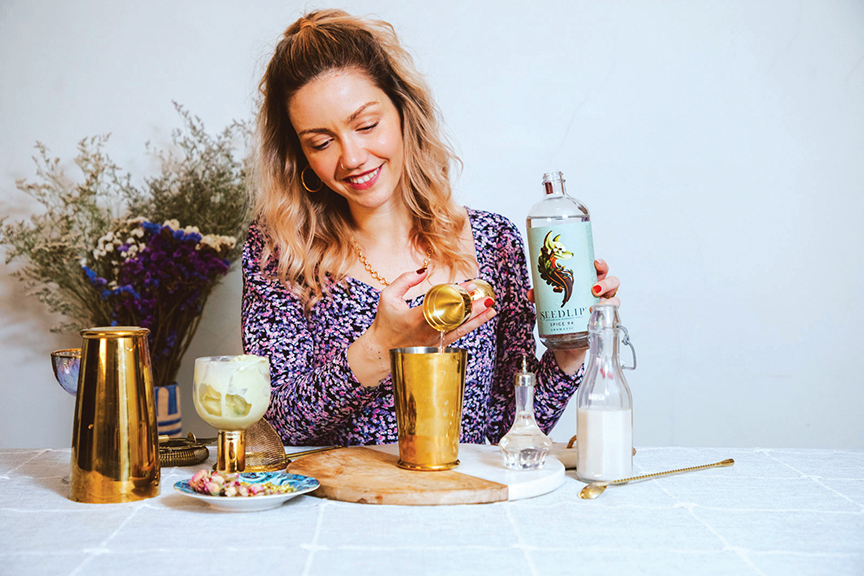
Above: Camille Vidal; Below: Laura Willoughby
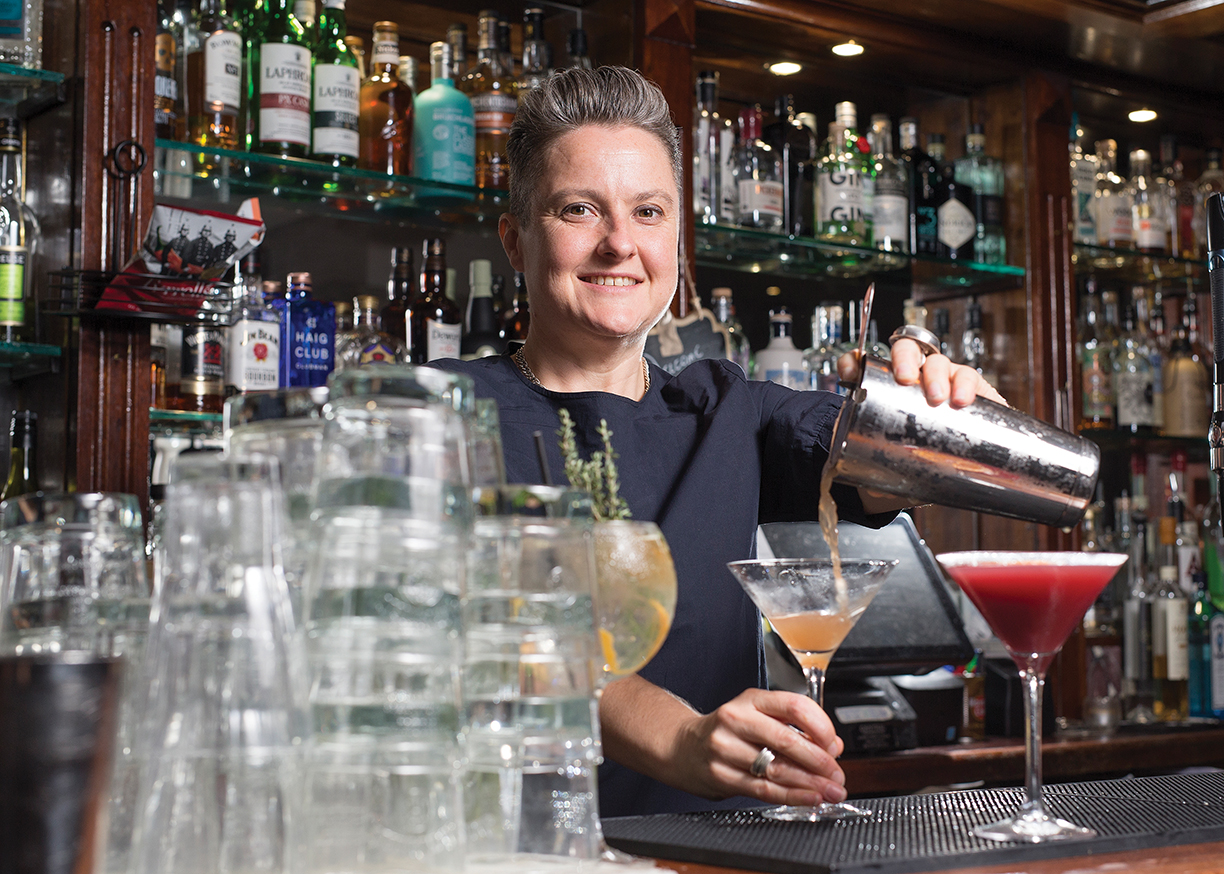
Willoughby herself enjoys drinking Three Spirit as one of her non-alcoholic options along with kombucha, which is something that Vidal says is a great addition to any non-alcoholic or low ABV cocktail. According to Vidal and Willoughby, choosing to become a mindful drinker doesn’t really have any setbacks, as it opens the door to a new lifestyle and way to enjoy nights out or time spent with good company. “People believe they have to give up their social life if they change their drinking, but what happens is your social life changes,” Willoughby says. “And guess what? Your social life changes anyway as you go through life.” On Club Soda’s website, the organization offers courses that help guide people down a mindful drinking journey that works for their lifestyle. “If somebody’s desire is to try and drink moderately,” says Willoughby. “Then that’s absolutely fine by us as well.” She goes on to say that there is a binary view of alcohol, which in actuality, there isn’t.”
Whether someone is choosing to phase alcohol out of their lives or is looking to start a new relationship with it, there are plenty of options that are just as delicious as their alcoholic counterparts. “I always say ‘tasty doesn’t have to be boozy,’” says Vidal. “For me, there’s something magical about having a low-alcoholic or non-alcoholic cocktail, and it’s not about the alcohol content, it’s about the moment, the celebration and appreciating the experience we’re having.”
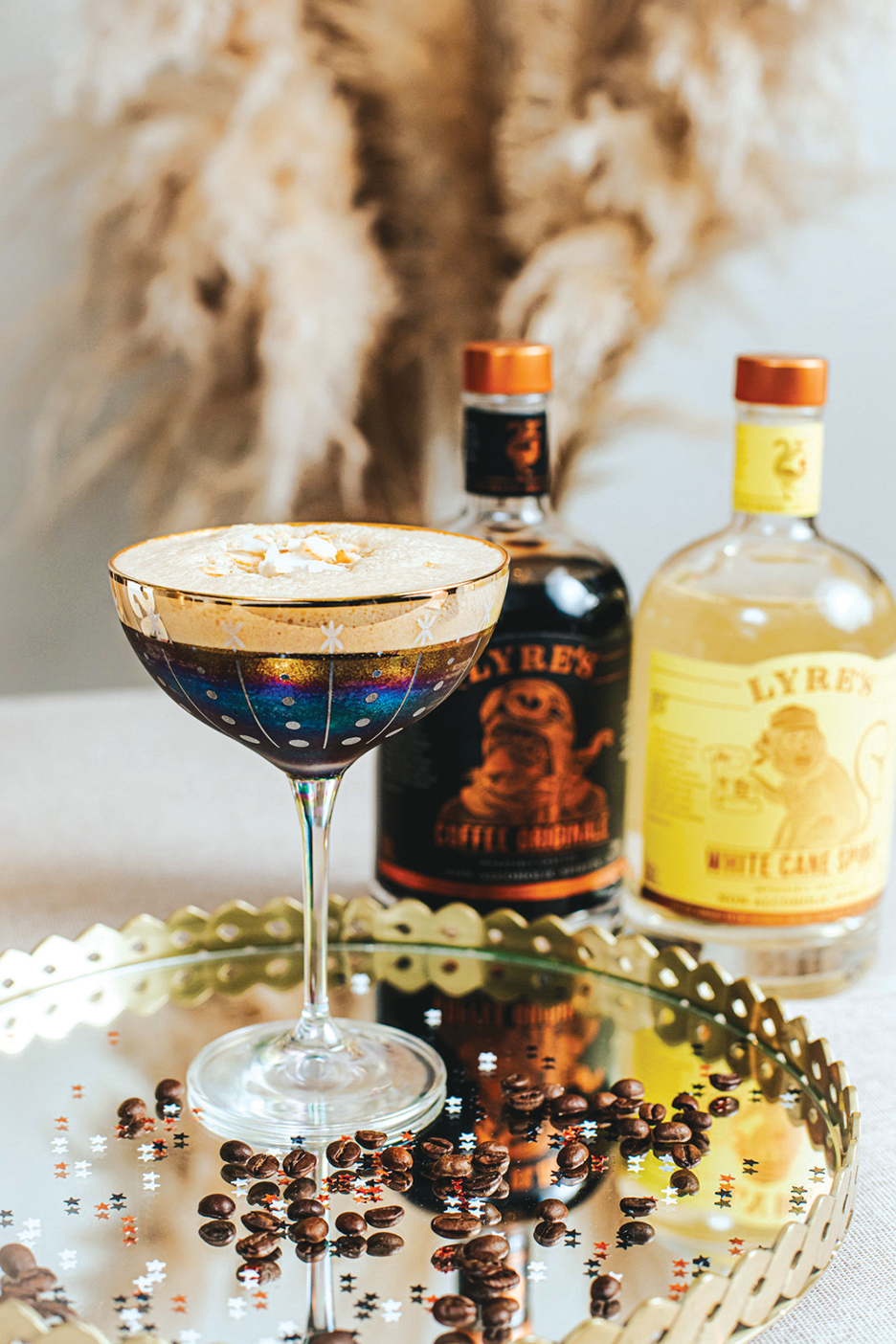
Café Soirée
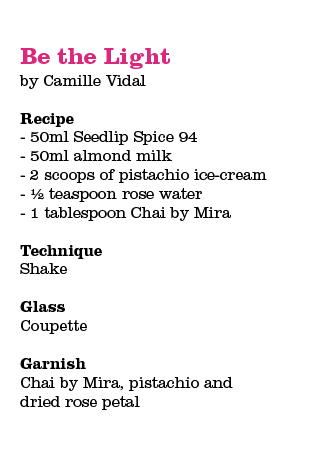
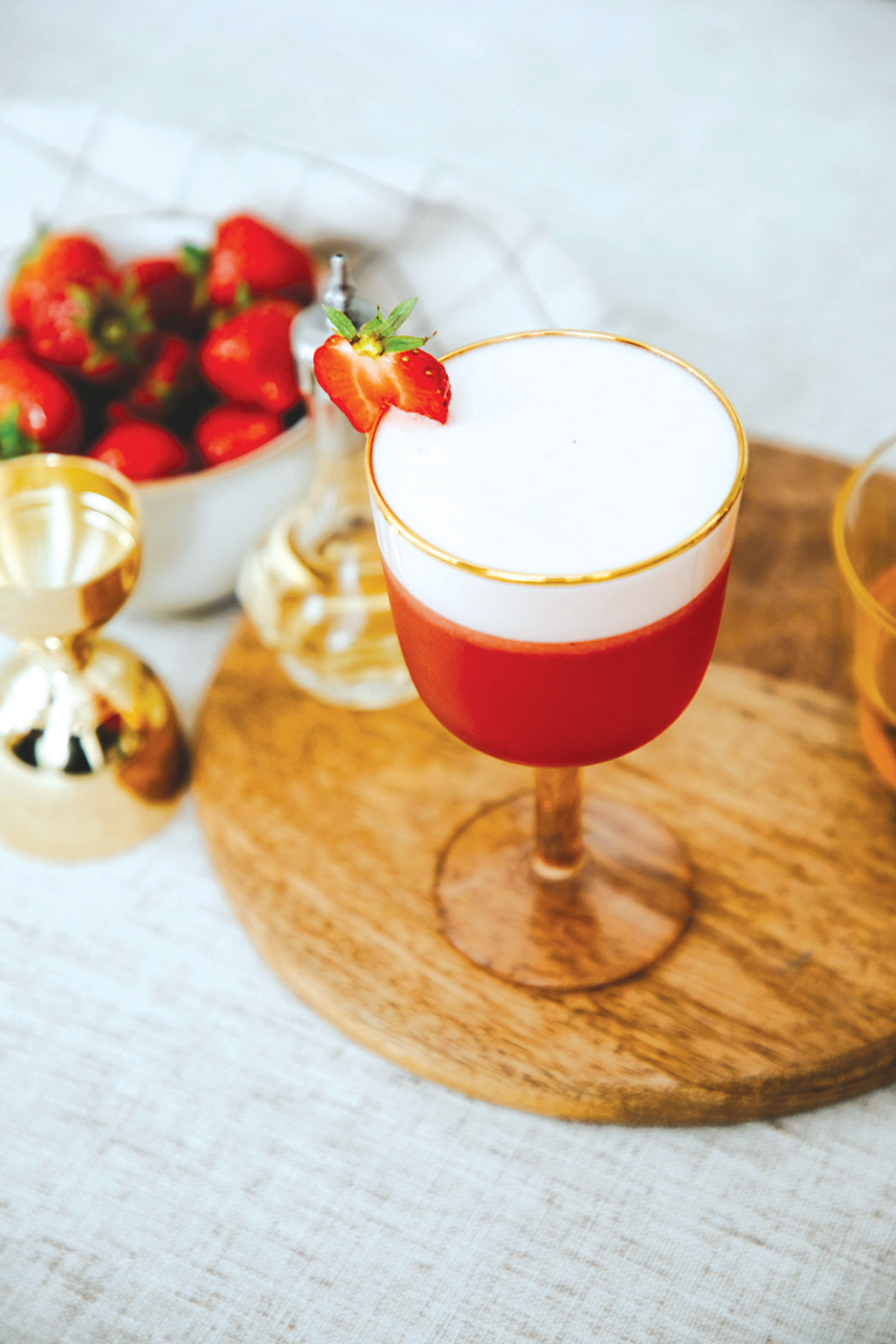
Strawberry Fields
A closer look at distinguishing qualities between Scotch and Bourbon.
by Chantele Machado
Throughout the world, there are several types of whisky, or whiskey; though among them all, Scotch and bourbon are two of the most beloved varieties. And while they do share some commonalities, their differences are immense, from the ingredients and flavor profiles to the distillation and aging process.
Location
Contrary to popular belief, bourbon whiskey is not required to be distilled inside the state of Kentucky. It can, in fact, be made anywhere throughout the United States. Although, Kentucky makes an ideal location due to the state’s famous limestone water, which is rich in nutrients like magnesium and calcium that are optimal for distilling and aids in the fermentation process. Conversely, in order to bear the title Scotch whisky, the spirit must be produced, as well as bottled, within the country of Scotland. Across the nation are five distinguished whisky-producing regions; the Highlands and Islands, Lowlands, Speyside, Islay and Campbeltown, each delivering their own regional characteristics and unique flavors.
Speyside is by far the biggest whisky–producing region in Scotland with more than 50 distilleries, while Campbeltown is home to merely three.
Ingredients
To qualify as a bourbon whiskey, its mash bill must be made up of at least 51% corn, with the remainder comprising a mix of other cereal grains like malted barley, rye and wheat. The spirit must also be free from any additives, such as coloring or flavoring, as to maintain an authentic and unadulterated profile. In contrast, the primary ingredient in Scotch whisky is barley. Grain whisky can vary with a combination of ingredients like malted and unmalted barley, corn and wheat.
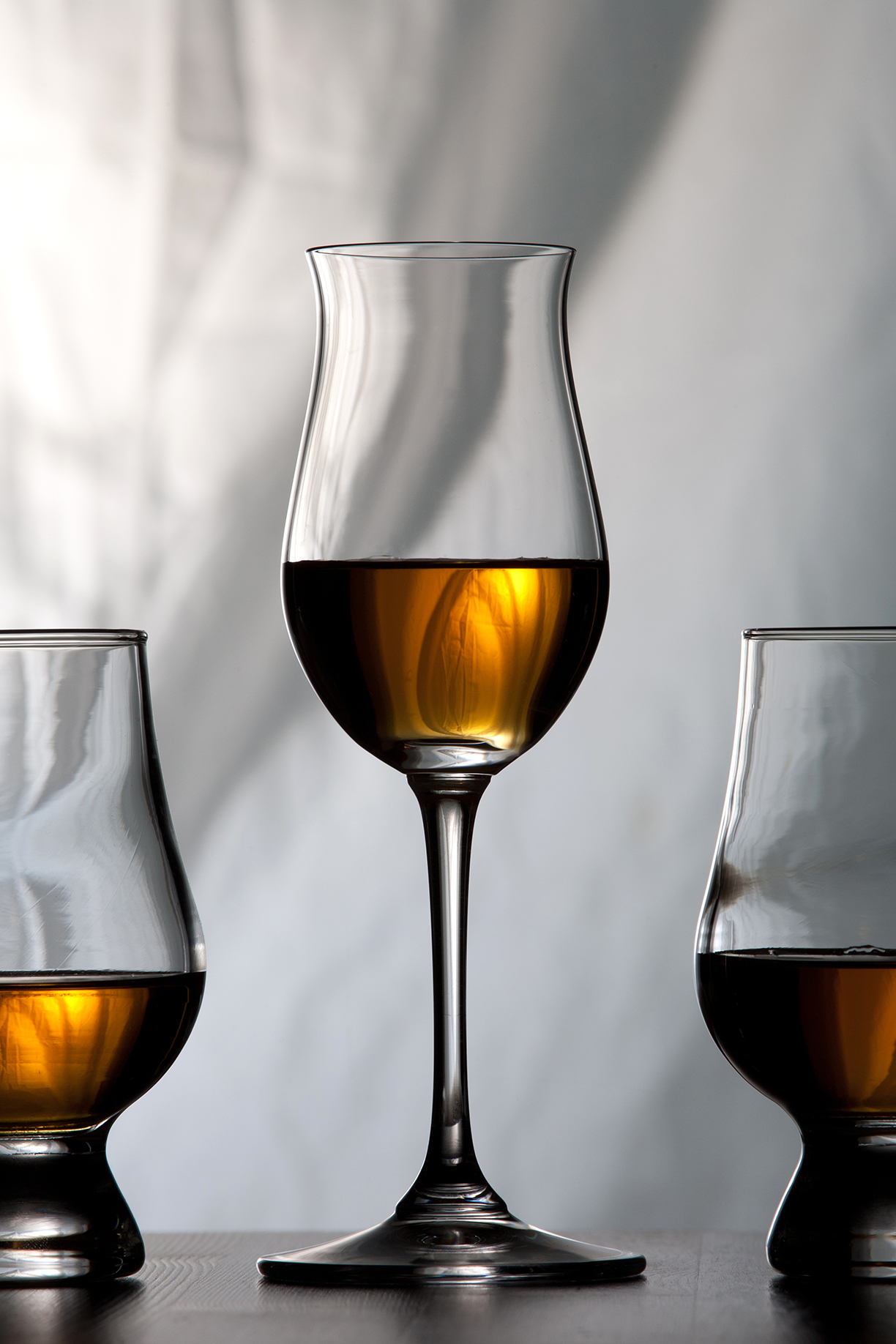
malt whisky, on the other hand, must be produced from 100% malted barley. Additionally, Scotch cannot be sweetened or contain any additives other than plain caramel for coloring.
Distillation
In bourbon making, the mash bill will ferment for several days before being transferred into a column still with all the original grain solids remaining in the mixture. The resulting liquid, called distiller’s beer, is then boiled, vaporizing the alcohol through the top of the column and directing it into a doubler, where it is distilled once more to remove any further impurities.
The remnants and spent grain left behind in the column still, termed as sour mash, is sometimes reintroduced into the fermentation process to make sour mash bourbon, another variety of whiskey. While bourbon whiskey is allowed to be distilled up to 160 proof, the distillate must be reduced to 125 proof or lower prior to barreling, as required by law. Alternatively, in Scotch distillation, what is referred to as wort is separated from its spent barley grains before beginning its fermentation process.
After spending two to four days in containers called wash backs, the liquid produced during fermentation is distilled first in a wash still to boil off the alcohol from the water, yeast and pot ale. The remaining distillate, known as low wines, then passes into a second spirit still to be distilled another time. Before being barreled, the foreshots and feints of the whisky are both channeled off to be redistilled with the low wines in the next batch. Only the pure center cut, or heart of the run, which averages around 130 proof, is collected.
Terms to Know
ANGEL’S SHARE
The alcohol that evaporates from a cask as the whisky is maturing in a warehouse.
COLUMN STILL
A tall industrial still that uses steam injection and allows for continuous, mechanized distillation that produces a cleaner spirit than a pot still does.
DOUBLER
A type of copper pot still commonly used in conjunction with a column still for the second round of distillation, especially for bourbon.
FORESHOTS
The more volatile compounds which distil off first during Scotch distillation.
FEINTS
The oilier compounds that are vaporized during Scotch distillation.
MASH BILL
The mixture of grains used to make bourbon.
PEAT
A compressed organic substance consisting of grasses, plants, tree roots and mosses that is used to dry malted barley and infuses a distinct peaty flavor.
POT STILL
A style of copper still that is most common in the distillation of single malt whisky.
SPIRIT STILL
The second, and often smaller, pot still used in the distillation of Scotch.
WASH STILL
The first, and often larger, pot still used in the distillation of Scotch.
WHISKEY
The spelling used by American and Irish distilleries.
WHISKY
The spelling used by Scotland, Canada, India, Japan and most of the rest of the world.
WORT
A warm and sugary solution that contains the soluble sugars from the malted barley dissolved in warm water.
Aging
Generally speaking, bourbon does not have a minimum aging require-ment, although, for a spirit to have the distinction of a ‘straight bourbon,’ it must be aged for at least two years. In addition, any bourbon aged less than four years must include an age statement on its label. Bourbon whiskey must also, by law, be aged in new charred oak barrels, which greatly contributes to the color characteristics and aging process.
This is a key difference in that Scotch distilleries have a large amount of freedom in choosing from a range of casks for which to age their spirits, including those which formerly contained wine, port, sherry and cognac, among others. This wide selection of vessels is part of tradition and allows distillers greater creative experimentation, having given rise to the method of finishing Scotch in secondary barrel; a common practice used today. And while several Scotch whiskies are aged for as many as 12, 15 and even 25 years, the minimum years for which a Scotch must be aged is three years.
Kentucky’s hotter climate results in more of the whiskey evaporating away as “the angel’s share” than is the case in Edinburgh, so aging a barrel of whiskey in Kentucky for 25 years pro- duces far less whiskey than would be the case in Scotland, and therefore a more rarefied product.
Flavor
Bourbon’s high proportion of corn lends the spirit to have a sweeter flavor profile compared to that of many other whiskeys, especially Scotch. Without the elements of added flavors or coloring, much of a bourbon’s character relies heavily upon the charred surface of new oak barrels from which it often develops oaky, vanilla and caramel notes.
Scotch is much more complex and boasts a greater range of flavors than bourbon, given the wider cask selection, opportunity for blends and the age-old regions throughout Scotland renowned for flavors distinct to them. Whiskies that come from the Highlands and Speyside are better known for a lighter, fruitier and sweeter profile than that of a robust, smoky and peaty beast from Islay. The Lowlands often produce mellow drams with floral tones, and the peninsula of Campbeltown is noted for the dryness and sometimes pungency of its Scotch.
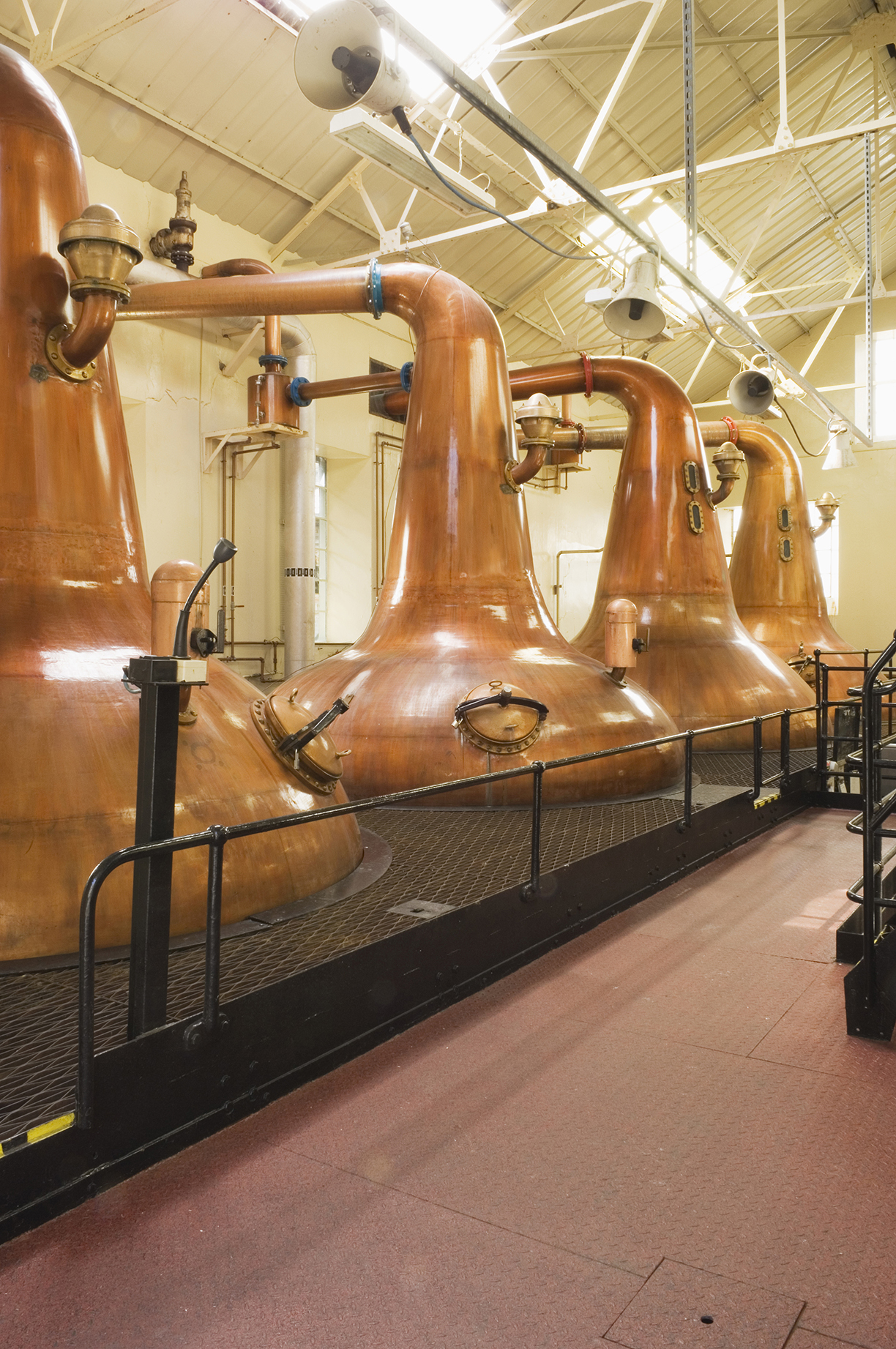
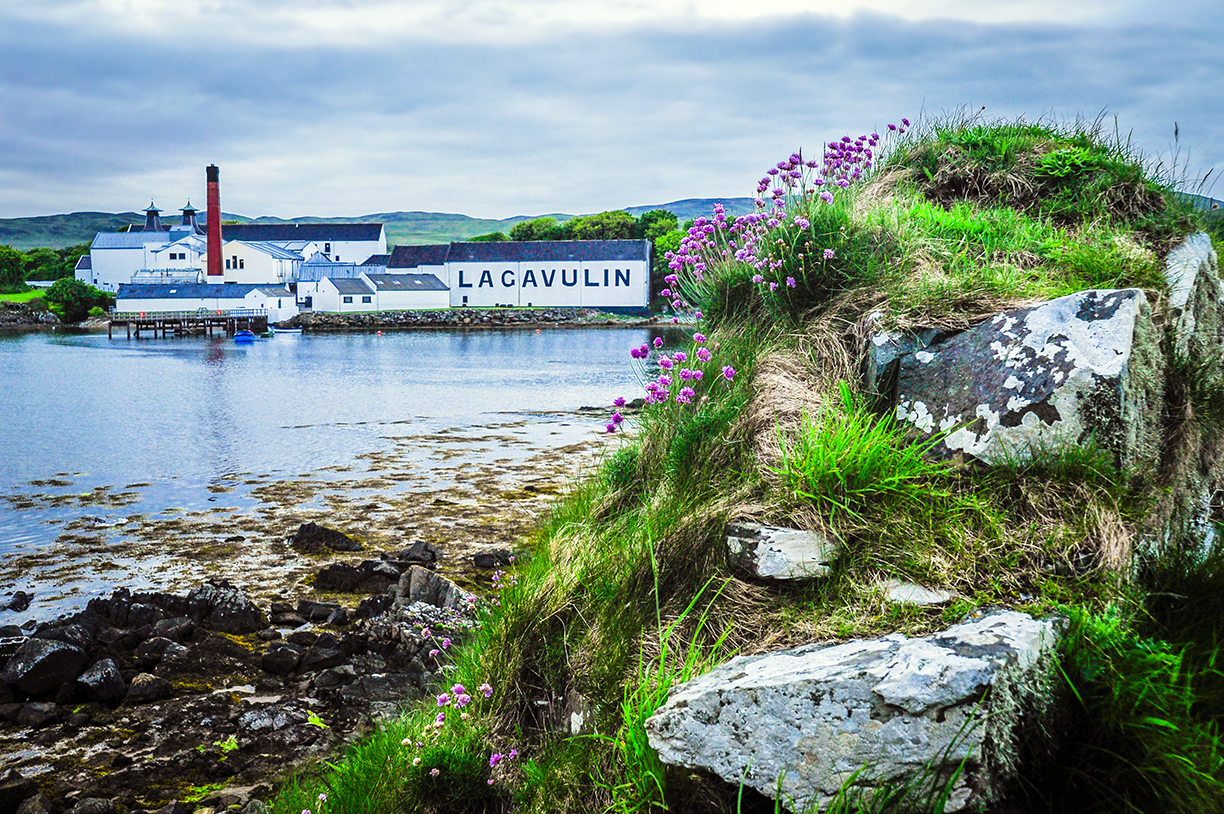
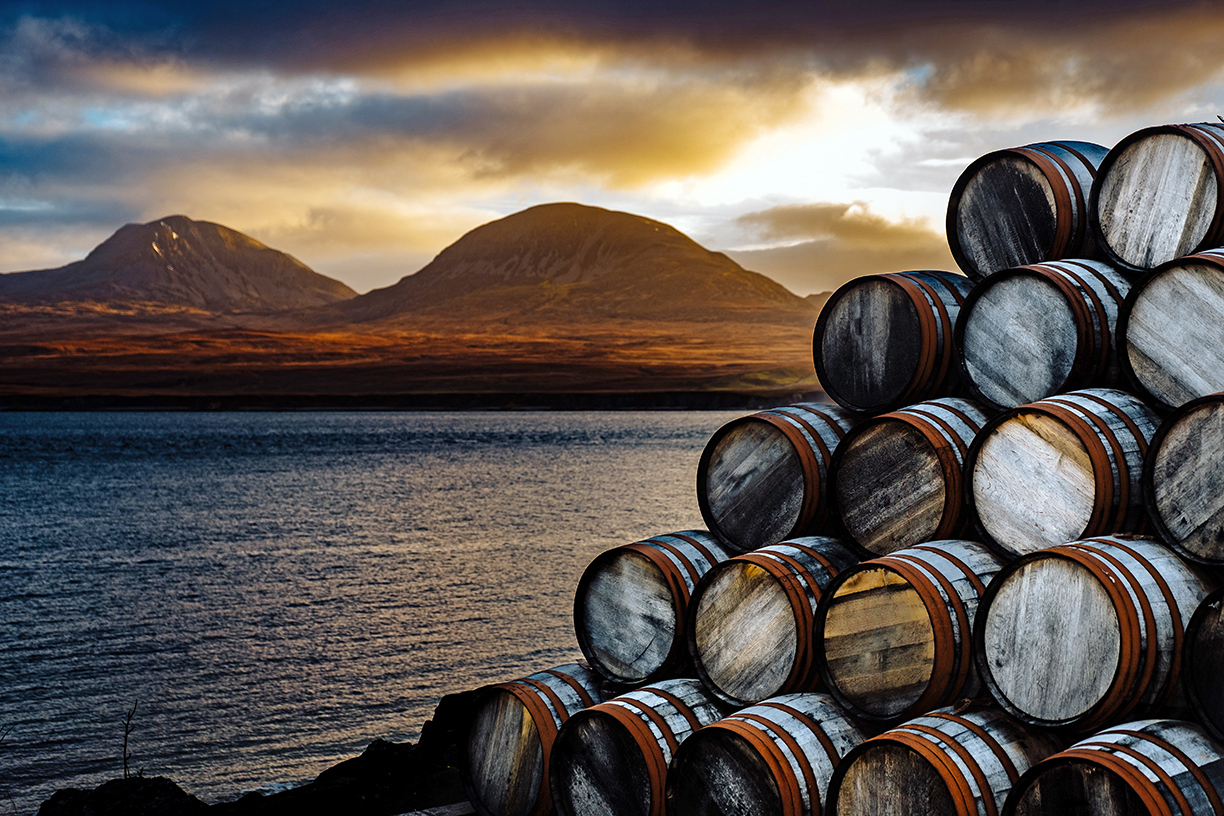
All photos courtesy LuxuryRealEstate.com
Content originally provided by LuxuryRealEstate.com.















